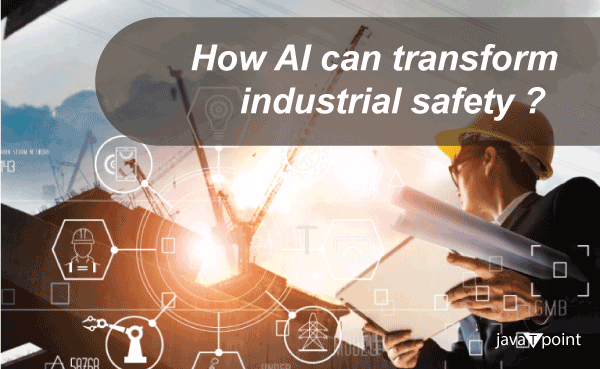How AI can Transform Industrial SafetyThe Importance of Workplace SafetyIn industries such as extracting minerals, building, and production, workplace security is crucial. It includes strict guidelines and precautions to avoid unfortunate events, injuries, and deaths. Historically, human consciousness and attention to precautionary regulations have played a major role in maintaining industrial safety. Industrial safety greatly benefits from AI's real-time analysis of large volumes of data. It has the ability to recognize possible safety risks before they worsen. AI, for example, can forecast when hardware is likely to break and allow for prompt repair to prevent calamities brought on by broken machinery. 
AI methods and technologies can be used in a variety of security-related scenarios. Drones, robots, wearable devices, detectors, smart devices, vision algorithms, augmented and virtual reality, mobile apps and analytics software are some examples of AI-enabled security technology. The technological parts perform tasks (like robots) or gather data (like sensors). Machine learning is used by software components to identify trends and provide insights into potential safety risks. Managers should evaluate the range of applications of AI in the field of safety in factories. Their business's atmosphere and risk-management procedures should support the use of AI technology for security. Applications of artificial intelligence for workplace safetyControlling an employee's interaction with work-related dangers is an essential component of worker protection, says the U.S. National Institute for Occupational Safety and Health. Personal protective equipment (PPE) is at the top of the NIOSH hierarchy of controls. The next set of controls includes engineering measures that keep workers safe from hazards and organizational measures that affect how workers operate. Lastly, there are risks replacement (changing the hazard) and elimination (completely getting rid of the hazard). Below are some instances in which artificial intelligence can support all of these different levels:
A corporate industrial safety strategyIntelligent technologies and AI are merely a single component of the problem. Both practical risk handling procedures and organizational culture are crucial. AI is essential for businesses looking to enhance their data practices. Adopting data-driven strategies for security at work is more probable when a company's other departments are also promoting a culture that values data. Unexpected events at work include both material and non-material expenses. Financial expenditures encompass employment insurance claims payments, legal fees, medical fees for staff therapies, and penalties levied by the Occupational Safety and Health Administration, or OSHA, in the United States. Reduced employee satisfaction decreased output from sick leaves, and reputational harm to brands aren't as measurable expenses. As a result, there is a compelling justification for using AI for company security concerns. The current state of affairs cannot continue, and AI helps to address these issues. |
 For Videos Join Our Youtube Channel: Join Now
For Videos Join Our Youtube Channel: Join Now
Feedback
- Send your Feedback to [email protected]
Help Others, Please Share









